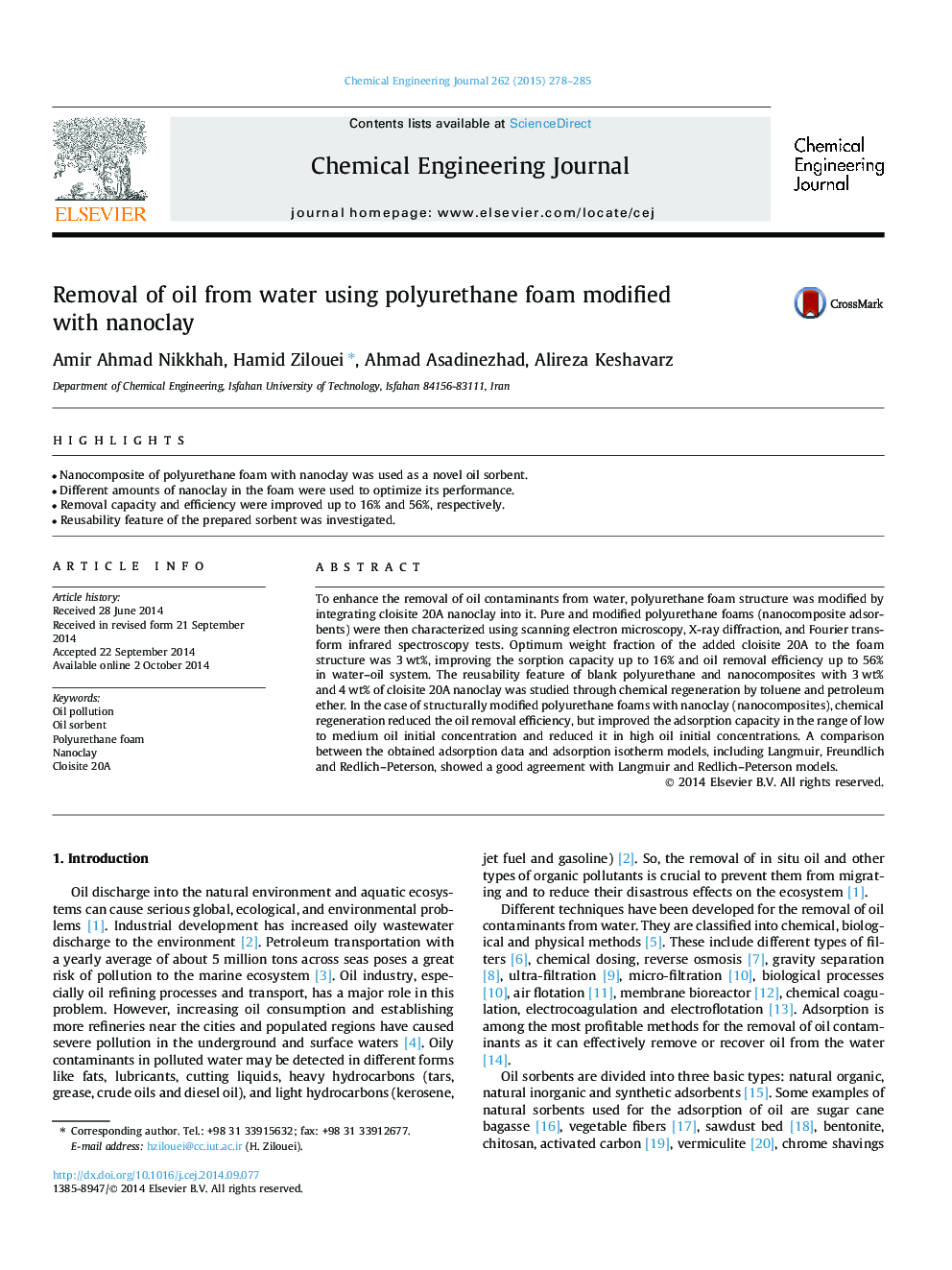| Article ID | Journal | Published Year | Pages | File Type |
|---|---|---|---|---|
| 6585377 | Chemical Engineering Journal | 2015 | 8 Pages |
Abstract
To enhance the removal of oil contaminants from water, polyurethane foam structure was modified by integrating cloisite 20A nanoclay into it. Pure and modified polyurethane foams (nanocomposite adsorbents) were then characterized using scanning electron microscopy, X-ray diffraction, and Fourier transform infrared spectroscopy tests. Optimum weight fraction of the added cloisite 20A to the foam structure was 3Â wt%, improving the sorption capacity up to 16% and oil removal efficiency up to 56% in water-oil system. The reusability feature of blank polyurethane and nanocomposites with 3Â wt% and 4Â wt% of cloisite 20A nanoclay was studied through chemical regeneration by toluene and petroleum ether. In the case of structurally modified polyurethane foams with nanoclay (nanocomposites), chemical regeneration reduced the oil removal efficiency, but improved the adsorption capacity in the range of low to medium oil initial concentration and reduced it in high oil initial concentrations. A comparison between the obtained adsorption data and adsorption isotherm models, including Langmuir, Freundlich and Redlich-Peterson, showed a good agreement with Langmuir and Redlich-Peterson models.
Related Topics
Physical Sciences and Engineering
Chemical Engineering
Chemical Engineering (General)
Authors
Amir Ahmad Nikkhah, Hamid Zilouei, Ahmad Asadinezhad, Alireza Keshavarz,
